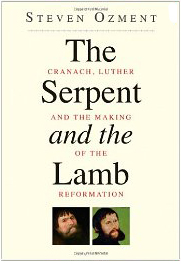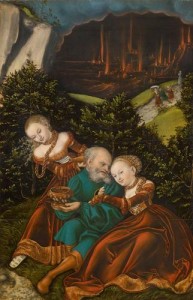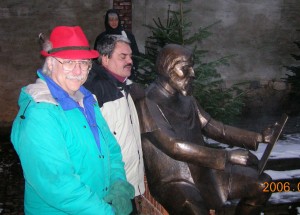
Steven Ozment is, undoubtedly, one of the leading historians of the Reformation in the world. I first read his early, seminal works in grad school (The Reformation in the Cities and The Age of Reform 1250-1550). He is a professor of history at Harvard where he continues to teach both graduate students and undergraduate course in western civilization.
I admire and have enjoyed his writings, more recently Magdalena & Balthasar and Protestants.
One of my beach books is his new study of Martin Luther and the Saxon court artist, Lucas Cranach, titled The Serpent and the Lamb.
It is a fascinating, provocative, frustrating, maddening, illuminating, challenging and informative read.
Cranach’s life is intertwined with Luther’s in numerous ways. Cranach illustrated some of Luther’s pamphlets, and was a partner in one of the printing presses that published Luther’s writings, including Luther’s German translation of the New Testament. They developed a close personal relationship. Cranach was a witness at Luther’s wedding and later godfather to his children.
Cranach himself was more than just a court painter. He has been justifiably placed in the first rank or artists with his friend and rival, Albrecht Durer. He was also a successful businessman, entrepreneur, large landowner, and city official (twice mayor) in Wittenberg.
Ozment’s biography of Cranach (with special attention to his relationship with Luther) is a magisterial tour de force. Ozment is in command of all the details and figures of Reformation Germany and deftly places Cranach in context and relationship with the major players: Frederick the Wise, elector of Saxony, Albrecht of Halle, twice arch-bishop, Emperor Maximillian and his grand-son, Charles V.
Ozment is also an observant analyst of the subjects and style of Cranach’s paintings over succeeding decades.
I’d recommend the book for anyone who is curious about Cranach’s life and art, and the relationship between the Reformation and the arts.
 Having said all that, there is one howler in Ozment’s otherwise astute analysis that is indicative of one of the blind spots of current historical analysis.
Having said all that, there is one howler in Ozment’s otherwise astute analysis that is indicative of one of the blind spots of current historical analysis.
In his discussion of Cranach’s treatment of women in a series of paintings of Old Testament heroines (an otherwise fascinating analysis), he turns to a 1528 painting by Cranach entitled Lot and His Daughters. Here’s how he summarizes the biblical story which Cranach depicted:
“The ending and moral of this story are also of great biblical complexity. Both daughters were impregnated by their father and delivered healthy boys who grew up to be leading Hebrew tribesmen. By its silence, the Old Testament implies that God took no offense at the daughters’ and the father’s transgression of the incest taboo. Apparently the daughters’ benevolent desire to salvage the future of their family, and perhaps all of humankind, made their gamble forgivable in the eyes of God.”
The story is told in Genesis 19 and the two healthy boys here are Moab and Ammon. Although descended from Terah (the father of Abraham) they are decidedly NOT Hebrew. The nations of Moab and Ammon became rivals, enemies, and at times oppressors of Israel. It’s a bit jarring, in an otherwise exceptionally well written book, to see such a simple factual error. All the more jarring, since one expects a historian of the Reformation to have a better than average knowledge of the Bible.
Doesn’t diminish the utility of the book, and my admiration for the author. Just a reminder that he’s not an expert in all areas.
